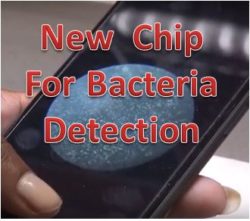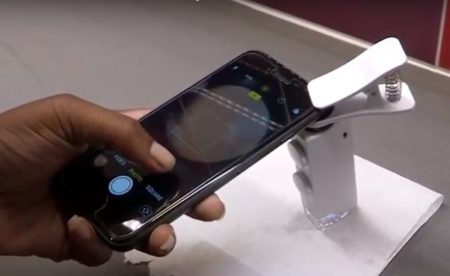UMass Amherst Developed a Low-Cost Chip to Detect Bacteria in Food and Water
 Rapid methods for the detection of pathogens have been gaining acceptance in the food industry. Recent advances in technology can result in faster detection of pathogens, more convenient, more sensitive methods. We have seen many new alternative methods being proposed in the past couple of years. Below is an example of such a novel method.
Rapid methods for the detection of pathogens have been gaining acceptance in the food industry. Recent advances in technology can result in faster detection of pathogens, more convenient, more sensitive methods. We have seen many new alternative methods being proposed in the past couple of years. Below is an example of such a novel method.
According to a press release from University of Massachusetts Amherst (https://www.umass.edu/newsoffice/article/umass-amherst-food-scientists-are ) a team of scientists (including Lily He, Lynne McLandsborough, and Brooke Pearson) developed a low cost, rapid method for the detection of bacteria in food samples.
The assay steps include rinsing the fruit or vegetable, collecting the rinse water sample, placing the water to the chemical-based microchip that captures the harmful bacteria, and detecting the bacteria using a smartphone with a light microscope adaptor. He said:” If there are harmful bacteria, it will be shown as visible dots, to indicate that you may have, for example, salmonella or Listeria.”

The Chip includes 3-mercaptophenylboronic acid (3-MBPA) that attracts and binds to any bacteria. Food particles, sugars, fat, and proteins can be washed away with a high-pH buffer.
There are two detection methods: (i) surface-enhanced Raman spectroscopy” (SERS) that relies on silver nanoparticles and the optical microscopy method. Both the optical method and the SERS mapping methods have a sensitivity of detection as few as 100 CFU/mL according to the publication (http://pubs.rsc.org/en/content/articlelanding/2017/ay/c7ay01596h#!divAbstract). The total assay time for the optical method is 1.25 hours and for SERS imaging 3 hours.
The method seems very attractive at first glance. It is straightforward and inexpensive. The use of a smartphone instead of a microscope is eye-catching. A lay person can use it without the need for a laboratory.
However, it seems to me that the method lack the desired selectivity as it detects all bacteria and not necessarily pathogenic bacteria. For pathogens, it lacks the desired sensitivity. While sensitivity of 100 CFU/mL is impressive, a system for pathogens needs to be 10,000 folds more sensitive.
There is a danger of prematurely promoting such rapid methods; it might take many years of research to obtain the desired specificity and sensitivity.
